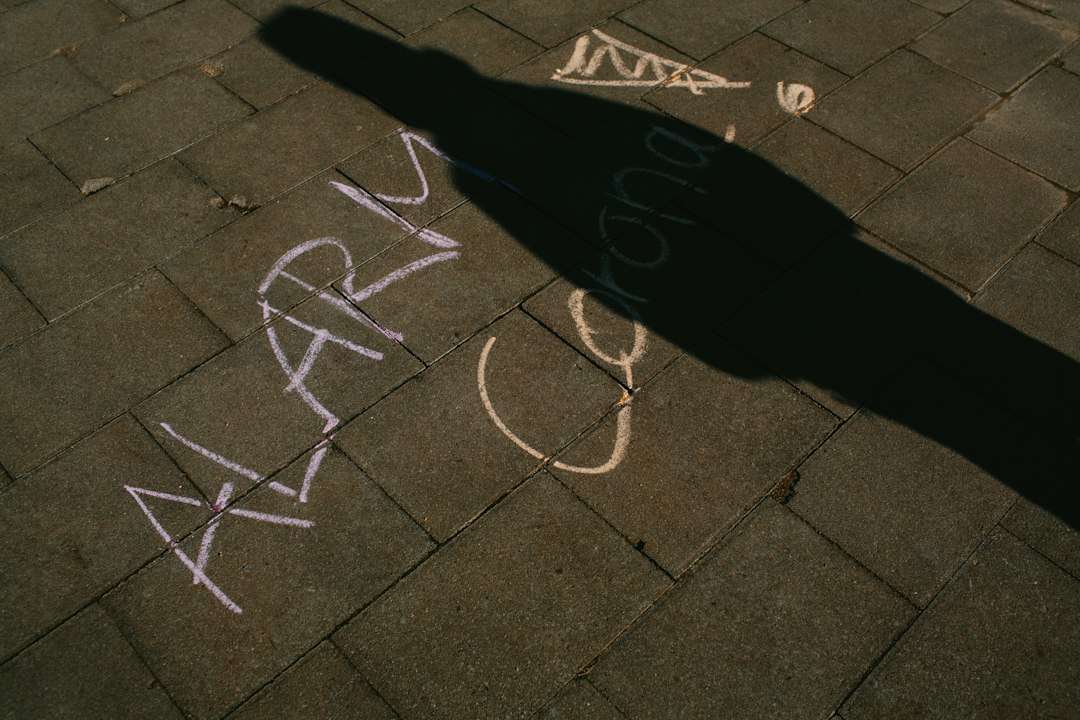The Hidden Secrets of Daily Life Symbolism

Daily life symbolism refers to the hidden meanings and messages that can be found in the objects, colors, numbers, animals, dreams, rituals, and elements of nature that we encounter in our everyday lives. These symbols have been used by cultures throughout history to convey deeper meanings and insights into the human experience. Understanding symbolism in daily life is important because it allows us to gain a deeper understanding of ourselves and the world around us. By recognizing and interpreting these symbols, we can uncover hidden truths, tap into our subconscious mind, and make more informed decisions.
Symbols have the power to shape our thoughts and actions in profound ways. They have a direct influence on our subconscious mind, which is responsible for our beliefs, values, and behaviors. Symbols can evoke emotions, trigger memories, and create associations that shape our perception of reality. For example, the symbol of a heart is universally recognized as representing love and affection. When we see this symbol, it triggers feelings of warmth and connection. Similarly, the symbol of a skull is often associated with death and danger, evoking feelings of fear or caution.
Throughout history, symbols have been used as powerful tools of persuasion and influence. Political leaders, religious figures, and advertisers have all used symbols to shape public opinion and behavior. For example, the swastika was originally a symbol of good luck in many cultures but was later adopted by the Nazis as a symbol of hate and oppression. This transformation demonstrates the power of symbols to change meaning and influence people’s beliefs and actions.
The Power of Symbols: How They Shape our Thoughts and Actions
Symbols have a profound impact on our thoughts and actions because they operate on a subconscious level. Our subconscious mind is responsible for processing information at a rapid pace and making quick judgments based on past experiences and associations. Symbols tap into this subconscious processing system by triggering emotions, memories, and associations that influence our perception and behavior.
Symbols also play a crucial role in shaping our beliefs and values. They can reinforce existing beliefs or challenge them, depending on the context and interpretation. For example, the symbol of a cross is a powerful religious symbol that represents sacrifice and redemption for Christians. This symbol reinforces their belief in the divinity of Jesus Christ and the importance of faith. On the other hand, the symbol of a crescent moon is associated with Islam and represents the Muslim faith. This symbol reinforces their belief in the teachings of the Prophet Muhammad and the importance of submission to Allah.
Symbols have been used throughout history to influence people’s beliefs and actions. Political leaders have used symbols to rally support for their causes, religious figures have used symbols to inspire devotion and faith, and advertisers have used symbols to create brand recognition and loyalty. For example, the American flag is a powerful symbol of patriotism and unity. It has been used by politicians to evoke feelings of national pride and by advertisers to associate their products with American values.
The Secret Meanings of Everyday Objects: From Keys to Mirrors
Everyday objects that we use without much thought often carry hidden symbolism and meaning. These objects can reveal insights into our lives and personalities when we take the time to examine them more closely. For example, keys are often associated with unlocking doors or gaining access to something. In a symbolic sense, keys can represent opportunities or solutions to problems. They can also represent power or authority, as in the phrase “holding the keys to the kingdom.”
Mirrors are another everyday object that carries symbolic meaning. In many cultures, mirrors are associated with self-reflection and introspection. They are often used as a metaphor for looking within oneself and gaining insight into one’s true nature. Mirrors can also represent vanity or self-obsession, as in the phrase “she can’t pass a mirror without looking at herself.”
Different cultures interpret the symbolism of everyday objects in unique ways. For example, in Chinese culture, the color red is associated with good luck and prosperity. Red envelopes are often given as gifts during special occasions, such as weddings or the Lunar New Year, to bring good fortune. In Western culture, the color white is often associated with purity and innocence. Brides traditionally wear white wedding dresses to symbolize their purity and virginity.
The Language of Colors: What Each Hue Symbolizes in Daily Life
Colors have a powerful psychological and emotional effect on us. They can evoke specific emotions and create different moods. Understanding the symbolism of colors can help us communicate messages more effectively and create a desired atmosphere or response.
Red is a color that is often associated with passion, love, and energy. It can also symbolize danger or anger. In marketing, red is often used to grab attention and create a sense of urgency. For example, many fast-food chains use red in their logos and signage to stimulate appetite and encourage quick decision-making.
Blue is a color that is often associated with calmness, trust, and stability. It can also symbolize sadness or depression. In marketing, blue is often used to create a sense of trust and reliability. Many banks and financial institutions use blue in their branding to convey a sense of security and professionalism.
Yellow is a color that is often associated with happiness, optimism, and creativity. It can also symbolize caution or cowardice. In marketing, yellow is often used to grab attention and create a sense of excitement. Many fast-food chains use yellow in their branding to evoke feelings of happiness and energy.
These are just a few examples of how colors can be used to communicate different messages. By understanding the symbolism of colors, we can make more informed choices about how we present ourselves and our ideas to others.
The Hidden Messages in Numbers: What They Reveal About Our Lives
Numbers have long been associated with symbolism and meaning in different cultures and religions. Numerology is the study of the mystical significance of numbers and how they can reveal insights into our personality and life path.
In many cultures, the number 7 is considered to be lucky. It is often associated with spirituality, intuition, and inner wisdom. In Christianity, the number 7 is associated with completion and perfection, as in the seven days of creation. In Chinese culture, the number 7 is associated with togetherness and harmony, as in the seven stars of the Big Dipper.
The number 13 is often considered to be unlucky in Western culture. It is associated with superstitions and bad omens. Many buildings skip the 13th floor or label it as the 14th floor to avoid any negative associations. In contrast, the number 13 is considered to be lucky in some cultures, such as in Judaism where it represents unity and completion.
Numerology is a tool that can be used for personal growth and self-discovery. By examining the numbers that appear in our lives, we can gain insights into our strengths, weaknesses, and life purpose. Numerology can also help us make more informed decisions and navigate life’s challenges with greater clarity.
The Significance of Animals: How They Represent Our Inner Selves

Animals have long been used as symbols in different cultures to represent different aspects of our personality and inner selves. They can be used as metaphors for our strengths, weaknesses, desires, and fears.
For example, a lion is often associated with courage, strength, and leadership. In many cultures, the lion is considered to be the king of the animal kingdom. The lion symbolizes power and authority, as well as protection and loyalty.
A snake is often associated with transformation, healing, and wisdom. In many cultures, the snake sheds its skin and is reborn, symbolizing the process of personal growth and transformation. The snake also represents healing and wisdom, as in the symbol of the caduceus, which is associated with the medical profession.
Animals are often used in literature and art to convey deeper meanings and insights into the human experience. For example, in George Orwell’s novel “Animal Farm,” different animals represent different political ideologies and social classes. The pigs represent the ruling class, the horses represent the working class, and the dogs represent the enforcers of power.
The Mystical World of Dreams: What They Can Teach Us About Life
Dreams have long been considered to be a window into our subconscious mind. They can reveal insights into our fears, desires, and unresolved emotions. Dreams often contain symbols and imagery that can be interpreted to gain a deeper understanding of ourselves and our lives.
For example, dreaming about flying can symbolize a sense of freedom or liberation. It can represent a desire to escape from the constraints of everyday life or to rise above challenges and obstacles. Dreaming about water can symbolize emotions and the unconscious mind. The state of the water in the dream, whether it is calm or turbulent, can provide clues about our emotional state.
Different cultures interpret the symbolism of dreams in unique ways. In some cultures, dreams are considered to be messages from the divine or ancestors. In others, dreams are seen as a way to access hidden knowledge or tap into higher states of consciousness.
The Spiritual Significance of Rituals: How They Connect Us to the Divine
Rituals are an important part of many religions and spiritual practices. They are symbolic actions that connect us to our inner selves and the divine. Rituals can help us create a sense of meaning and purpose in our lives, as well as provide comfort and solace during times of difficulty.
For example, lighting candles in a religious ceremony can symbolize the presence of the divine and the offering of prayers or intentions. The act of lighting a candle can create a sacred space and a sense of connection to something greater than ourselves.
Meditation is another example of a ritual that is used in many spiritual practices. It is a symbolic action that allows us to quiet the mind, connect with our inner selves, and tap into higher states of consciousness. Meditation can help us gain clarity, reduce stress, and cultivate a sense of peace and well-being.
Rituals can also be used for personal growth and self-discovery. They can help us create a sense of structure and routine in our lives, as well as provide a space for reflection and introspection. By incorporating rituals into our daily lives, we can create a deeper sense of meaning and purpose.
The Symbolism of Nature: How the Elements Reflect Our Inner World
Nature is full of symbolism and metaphors that can be used to gain insights into our inner world. The elements of nature, such as water, fire, earth, and air, have long been associated with different aspects of our personality and emotions.
Water is often associated with emotions, intuition, and the subconscious mind. It can symbolize the ebb and flow of emotions, as well as the depths of our inner world. Water can also represent purification and renewal, as in the symbolism of baptism or the cleansing power of tears.
Fire is often associated with passion, energy, and transformation. It can symbolize the spark of inspiration or the burning desire to achieve our goals. Fire can also represent destruction and rebirth, as in the symbolism of a phoenix rising from the ashes.
Earth is often associated with stability, grounding, and abundance. It can symbolize our connection to the physical world and our need for security and nourishment. Earth can also represent fertility and growth, as in the symbolism of planting seeds or the cycle of the seasons.
Air is often associated with communication, intellect, and freedom. It can symbolize the power of our thoughts and words to create change and influence others. Air can also represent the breath of life and the connection between the physical and spiritual realms.
Nature is often used in literature and art to convey deeper meanings and insights into the human experience. For example, in William Shakespeare’s play “Macbeth,” the weather and natural elements reflect the moral and psychological state of the characters. The stormy weather symbolizes chaos and turmoil, while the calm after the storm represents resolution and redemption.
Bringing Daily Life Symbolism into Practice: How to Harness its Power for Personal Growth
Incorporating symbolism into our daily lives can help us gain deeper insights into ourselves and the world around us. Here are some tips for harnessing the power of symbolism for personal growth:
1. Pay attention to your surroundings: Take notice of the symbols and objects that you encounter in your daily life. Reflect on their meaning and how they may relate to your own experiences and emotions.
2. Keep a dream journal: Write down your dreams and reflect on their symbolism. Look for patterns or recurring themes that may provide insights into your subconscious mind.
3. Create rituals: Incorporate rituals into your daily routine that have personal meaning for you. This could be as simple as lighting a candle or saying a prayer before starting your day.
4. Explore numerology: Study the significance of numbers in different cultures and religions. Look for patterns or synchronicities in your own life that may provide insights into your personality or life path.
5. Use colors intentionally: Consider the symbolism of different colors when making choices about your clothing, home decor, or branding. Choose colors that align with your intentions or desired mood.
6. Connect with nature: Spend time in nature and observe the elements around you. Reflect on how they may reflect different aspects of your personality or emotions.
By incorporating symbolism into our daily lives, we can gain a deeper understanding of ourselves and the world around us. Symbolism can help us tap into our subconscious mind, make more informed decisions, and navigate life’s challenges with greater clarity.
If you’re fascinated by the hidden meanings behind everyday experiences, you’ll love exploring the symbolism of various practices and elements. In a related article on Symbolism Hub, delve into the intriguing world of massage therapy for pinched nerves. Discover how this therapeutic technique not only provides physical relief but also holds symbolic significance in terms of releasing blocked energy and restoring balance. To further expand your knowledge, check out other captivating articles such as the symbolism of the sun, the snake, the star, cryotherapy in London, cryotherapy vs. ice bath, and what the moon symbolizes. Each piece offers a unique perspective on how these elements can hold deeper meanings in our daily lives. So, click here to uncover more hidden secrets: https://symbolismhub.com/massage-for-pinched-nerves/.
FAQs
What is daily life symbolism?
Daily life symbolism refers to the use of everyday objects, actions, and events to represent deeper meanings and ideas. It is a way of communicating through symbols that are commonly understood by a particular culture or society.
What are some examples of daily life symbolism?
Examples of daily life symbolism include the use of colors, animals, plants, and objects to represent certain ideas or emotions. For instance, the color red can symbolize passion or danger, while a dove can represent peace and a rose can symbolize love.
Why is daily life symbolism important?
Daily life symbolism is important because it allows people to communicate complex ideas and emotions in a way that is easily understood by others. It can also help to create a sense of unity and shared understanding within a particular culture or society.
How can I learn more about daily life symbolism?
You can learn more about daily life symbolism by studying the symbols and meanings that are commonly used in your own culture or society. You can also read books or articles on the subject, or take courses or workshops that focus on symbolism and its uses.
Can daily life symbolism be different in different cultures?
Yes, daily life symbolism can vary greatly between different cultures and societies. What may be considered a symbol of love or happiness in one culture may have a completely different meaning in another culture. It is important to be aware of these differences when communicating with people from different cultures.





